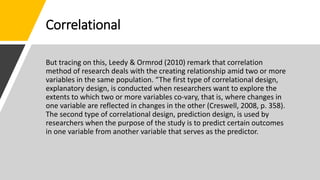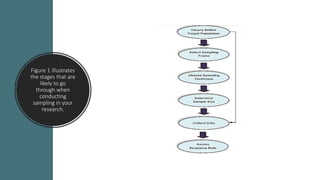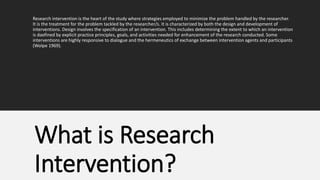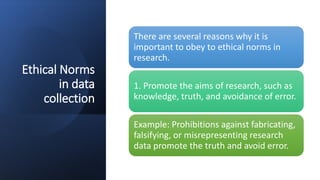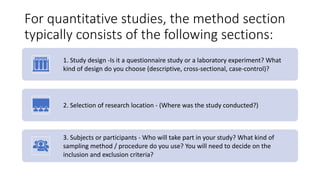The document discusses various methods used in quantitative research, including survey research, correlational research, experimental research, causal-comparative research, and sampling methods. It provides details on each method/technique, such as how surveys involve using scientific sampling and questionnaires to gather information from a population. It also discusses the different types of experimental, causal-comparative, and correlational research designs. Additionally, it outlines the various steps involved in sampling, including defining the population, selecting a sampling frame, choosing a sampling technique, determining sample size, collecting data, and assessing response rates.







